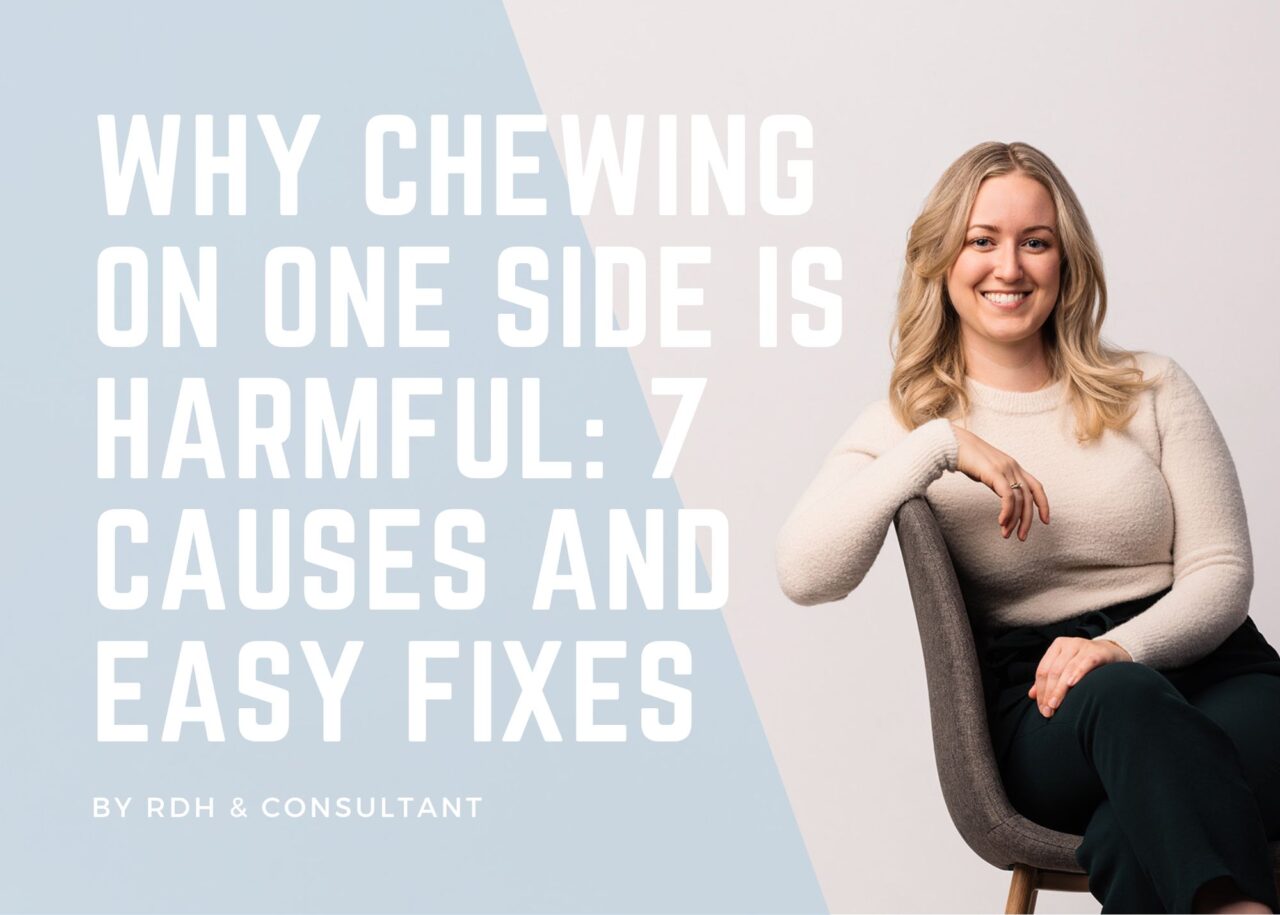
Chewing on one side of the mouth comes with many risks, as it can cause irreversible damage to the mouth, cause pain and discomfort, and even change the shape of your face.
As a dental hygienist, I work with my patients to improve their oral health and overall well-being.
I am passionate about providing well-rounded care to my patients. My job isn’t just cleaning teeth; it is working together with my patients to help them attain optimal oral health.
Dental hygiene therapy involves discussing parafunctional habits, such as teeth clenching and grinding, as well as biting forces, such as favouring one side while chewing.
Below, I explain in much more depth why chewing only on one side might occur and what to do to rectify the cause.
1. Our subconscious brain determines which side we chew on.
Our subconscious mind works incredibly well at choosing which side of our body we prefer to use. We have a dominant hemisphere of our brains that manifests in our behaviour, such as being left or right-handed.
This study  explored nineteen young and healthy volunteers who chewed hard and soft foods while their masseter muscles underwent surface electromyography to determine which side was more dominant.
explored nineteen young and healthy volunteers who chewed hard and soft foods while their masseter muscles underwent surface electromyography to determine which side was more dominant.
According to the study, the preferred side of chewing is directly influenced by the dominant hemisphere of the brain, even on a subconscious level.
Usually, chewing is an unconscious activity that we don’t focus on because it relaxes our body and activates the parasympathetic nervous system.
Feeling sluggish after eating is common, and it is also known as a “food coma.” This happens because our bodies are relaxed and not sensing any danger.
To improve food distribution, be more mindful when chewing, move the food around your mouth, and chew evenly. You can even count the number of chews and make sure you’re biting the same amount on either side.
Understand the risks of eating on one side of the mouth, not just the causes. I wrote a post linked below that goes into great detail about the consequences!
Read Now: Risks of Eating on One Side of Your Mouth; Hygienist’s View
But sometimes, a more complex issue causes uneven chewing, and I go over those below.
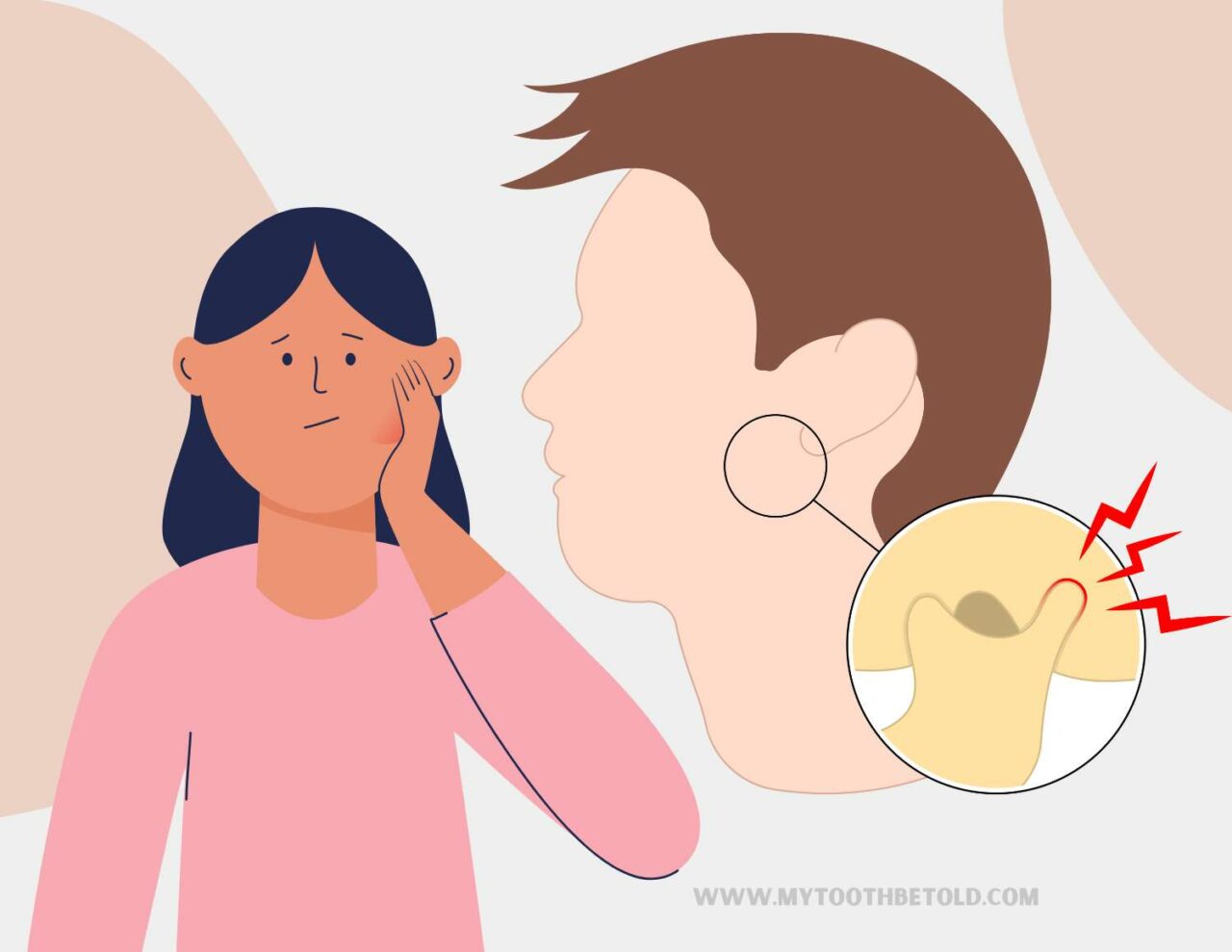
2. Dental pain and sensitivity causing one-sided chewing
If you have pain and sensitivity while chewing, you may avoid that area and chew on the other side of your mouth.
Have a thorough examination done by a dentist to rule out tooth decay, infection or any other dental issues.
Treating the pain and sensitivity at the source is essential to help reduce or eliminate dental pain/sensitivity. An underlying issue that the naked eye cannot see may require an X-ray to assess the area.
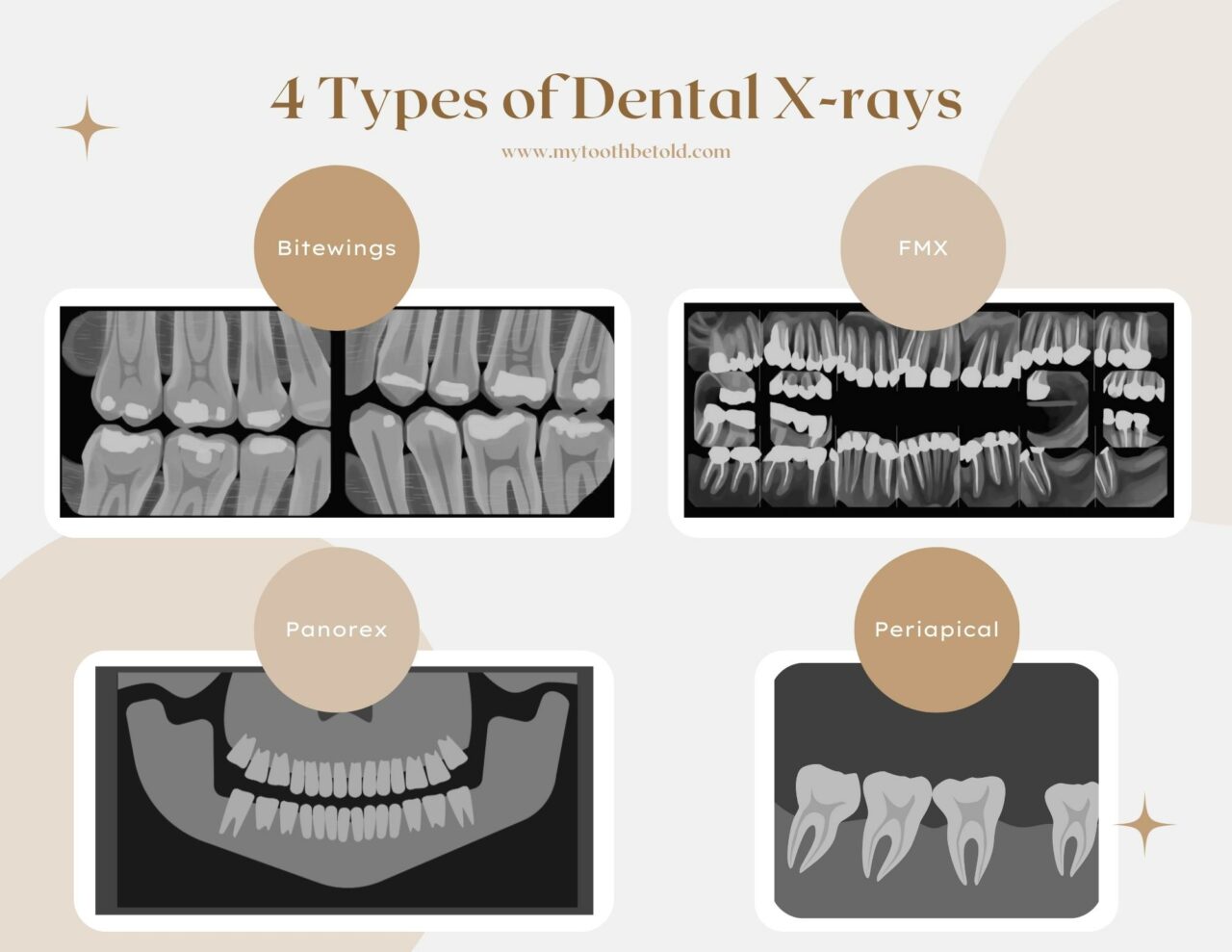
The dentist may want to take X-rays to see what is underneath the gumline where the naked eye cannot see.
Read Now: How Often Should You Get Xrays at the Dentist? DH Explains
3. Missing teeth/teeth position
Missing teeth in the mouth create an imbalance of forces and can make chewing more difficult, as the food is not chewed thoroughly.
If teeth are not aligned, it affects how they come together, bite down, and break up food. If there are large spaces or tilted/rotated teeth, the food may not even be chewed between the teeth.
I have patients who complain about eating difficulties because they are missing teeth. Some have even mentioned they don’t like going out for dinner or eating in front of other people because they have become self-conscious about eating.
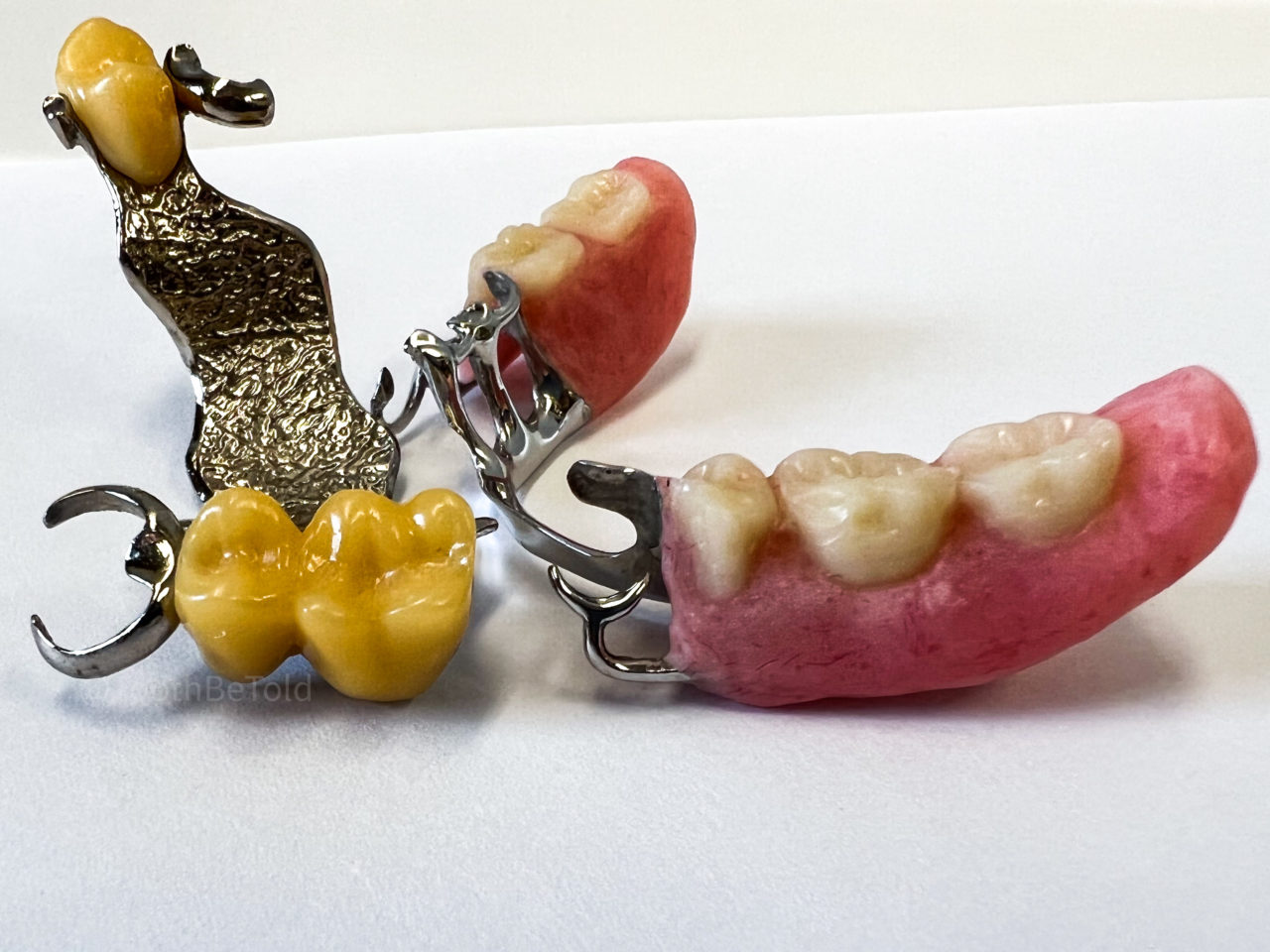
For my patients who are missing teeth in their mouths, I discuss their goals for tooth replacement. Replacing teeth will significantly improve the distribution of eating forces.
If teeth are missing, it is best to have them replaced to improve the distribution of eating forces. This could be by dental implants, bridges, or dentures.
4. Orthodontics: Invisalign, traditional braces, dental surgery
If the teeth are being moved to an improved alignment, it is essential to remember it is a journey to get to the final result.
During orthodontic treatment or dental surgery, the position of teeth gradually shifts, causing changes in the alignment and bite as the treatment progresses.
Sometimes, during treatment, the alignment of teeth is extremely off, and the teeth do not even come together in parts of the mouth.
If you are concerned about how your teeth bite together, speak to your dental professional. In the meantime, I wrote a post about the perfect bite so you can check your mouth.
Read Now: Perfect Bite: How Teeth Should Line Up and Come Together
5. Cheek biting causing you to eat on one side only
It is painful to keep biting the cheek when eating. Over time, scar tissue can form, making the tissue larger and increasing the chances of biting it repeatedly.
A person may avoid the area where they keep biting and will chew on the other side of the mouth.
To avoid cheek biting, eat more slowly or have your dental professional check the area that keeps getting bitten. You may be able to have some of the tissue removed to help prevent cheek biting.
6. Imbalance of jaw muscles
An imbalance of jaw muscles can pull the mandible (lower jaw) more in one direction, which can start to disrupt the bite.
If you eat primarily on one side and work out those muscles, an imbalance of jaw muscles can develop over time.
It can also occur from clenching and grinding, which I go over below.
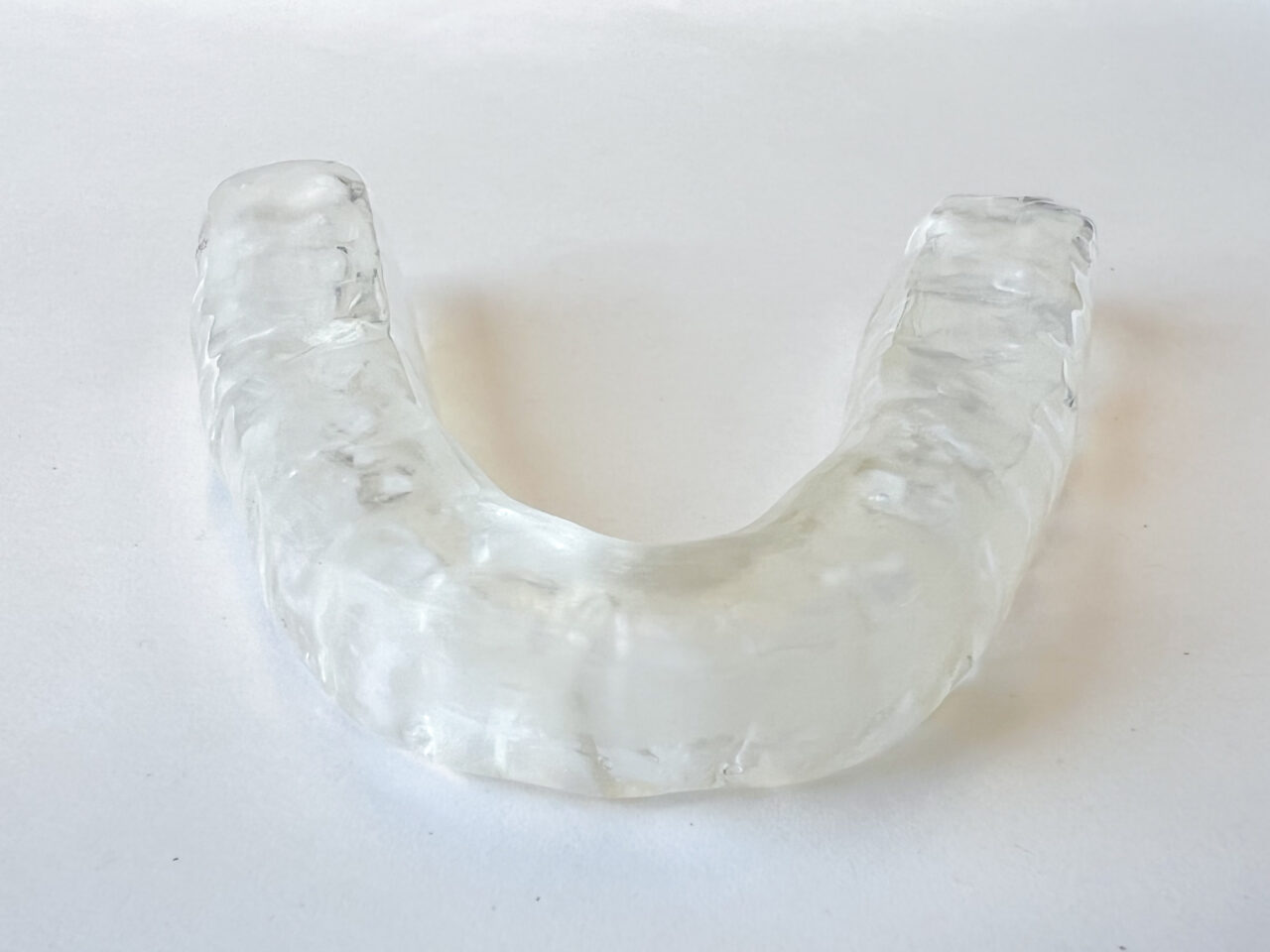
7. Clenching and grinding
Clenching and grinding most commonly happen at night; many people do not know they’re doing it.
Clenching and grinding affect the jaw muscles and have other consequences, such as
- gum recession
- loss of tooth structure
- irreversible damage
Clenching and grinding also affect the head and neck muscles, leading to
- headaches
- neck spasms
- decreased quality of life
Wearing a nightguard and seeing other specialized healthcare professionals can significantly reduce clenching and grinding and minimize pain.
Everything is connected, and we work closely with physiotherapists, massage therapists and other medical professionals to provide the patient with well-rounded and thorough care.
Getting to the root cause of the clenching and grinding is essential, so working with other health professionals can significantly help our patients.
I’ve witnessed patients benefit significantly from physiotherapy, massage therapy, acupuncture, and even Botox to alleviate jaw discomfort.
I hope this information has been helpful to you!
Have a great day,
Holly 🙂
